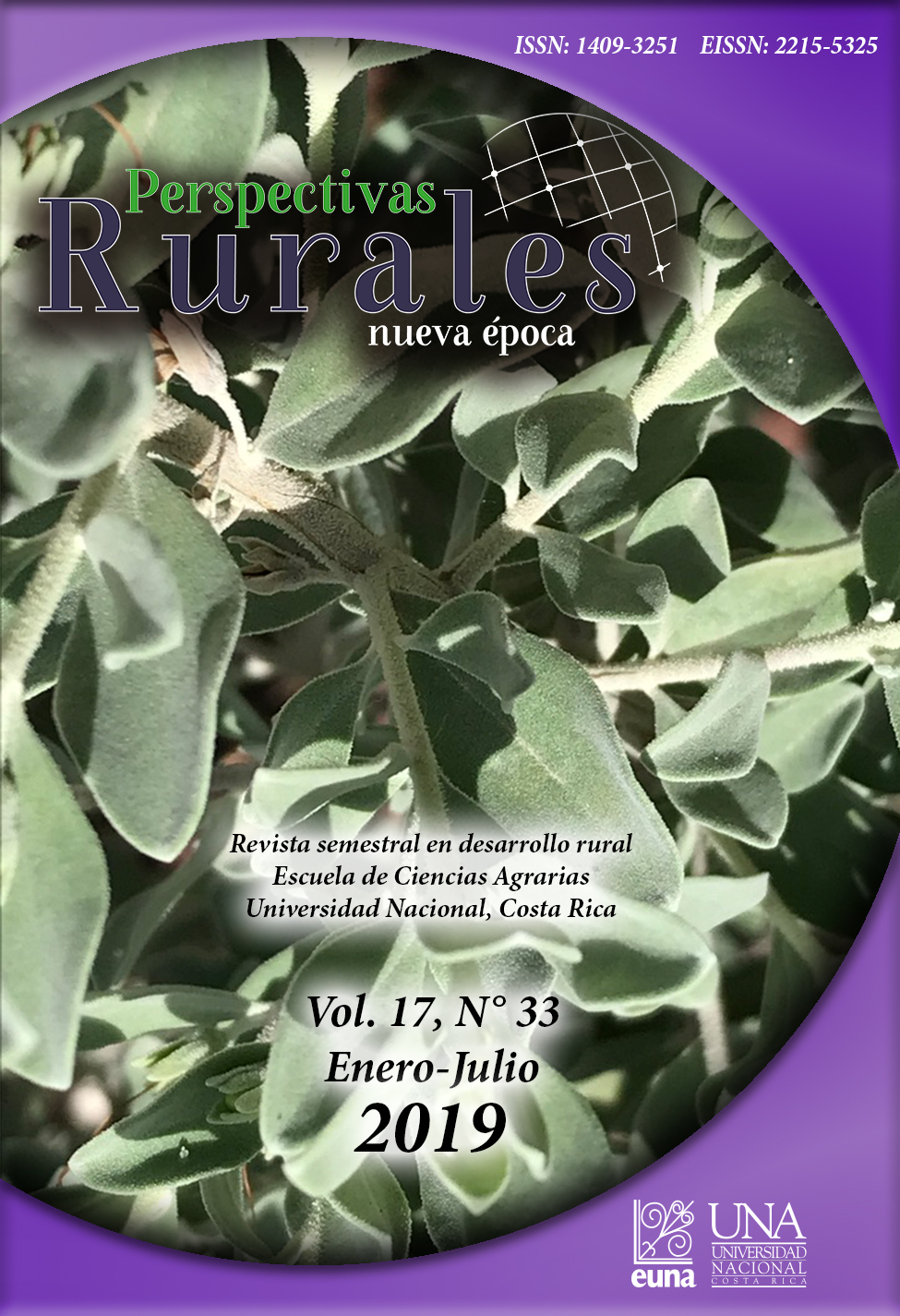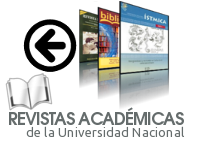Effect of altitude on the morphological and sensory characteristics linked to the quality of quelite type chayote fruit (Sechium edule) produced in the Ujarrás Valley, Costa Rica
DOI:
https://doi.org/10.15359/prne.17-33.7Keywords:
morphological analysis, sensory analysis, chayote, quelite type, indication of origin, Ujarrás ValleyAbstract
Quelite type chayote, a local selection, has become the most important in the country, particularly in the main planting and conditioning area in the Ujarrás Valley and in the neighboring plantations located at higher altitudes, towards which the planting areas have been expanding, which could be affecting some morphological and sensory characteristics of the chayote fruit like its uniformity and quality and its acceptance in export markets. The present study aims to determine the effect of altitude on some morphological and sensory characteristics, through laboratory determinations and consultation with local producers. The morphological analysis showed that the low zone presented the highest mean values in the length, width, depth, and weight variables with a significant difference in relation to the high zone; however, the magnitude of the effect does not affect the quality of the export fruit. In the categorical variables (color, shape, distribution of furrows, among others), a greater probability of finding slightly larger cracks in the fruit in the lower zone was found, while for the rest of variables no differences were found. From the sensory point of view, some differences were found in color and firmness; however, for most of the descriptors studied there is no difference as a result of the area.
References
Centro de Apoyo para el Desarrollo de Denominaciones de Origen y Sellos de Calidad de Productos Agroalimentarios (2016). Diagnóstico socioeconómico y organizacional de los productores de chayote. CadenAgro, UNA. Costa Rica. [no publicado].
Cruz, A. (1991). Recursos genéticos de chayote o erizo [Sechium edule (Jacq.) Sw.] en México. In Avances en el estudio de los recursos fitogenéticos de México. Editado por: R. Ortega, G. Palomino, F. Castillo, V.A. González y M. Livera. Chapingo, Sociedad Mexicana Fitogenética (SOMEFI), pp. 261-279.
Cruz, A., Querol, D. (1985). Catálogo de recursos genéticos de chayote (Sechium edule Sw.) en el Centro Regional Universitario de la Universidad Autónoma Chapingo. Huatusco, Universidad Autónoma de Chapingo, 236 p.
Esquinas-Alcazar, J.T.; Gullick, P.J. (1983). Genetic Resources of Cucurbitaceae – a global report-Rome, International Board for Plant Genetic Resources Institute (IBPGR) Secretariat, 101 p.
Gamboa, W. (2005). Producción agroecológica: una opción para el desarrollo del cultivo del chayote (Sechium edule (Jacq.) Sw.). San José: Editorial Universidad de Costa Rica.
Maffioli, A. (1981). Recursos genéticos de chayote, Sechium edule (Jacq.) Swartz, (Cucurbitaceae). Turrialba, Centro Agronómico Tropical de Investigación y Enseñanza (CATIE). CATIE/GTZ. 151p.
Ministerio de Agricultura y Ganadería. (2010). Cultivo del fruto de chayote. Cartago. 27p. In http://www.mag.go.cr/bibliotecavirtual/E70-9557.pdf
Newstrom, L. E. (1985). Collection of chayote and its wild relatives. Plant Genetics Resources Newsletter 64: 14-20.
Secretaría Ejecutiva de Planificación Sectorial Agropecuaria (SEPSA). (2018). Boletín Estadístico Agropecuario. Serie Cronológica 2014 - 2017. San José, Costa Rica, №28.
Valenciano, A. (2004). Flujos de Información y Sistemas de Innovación en las Cadenas del Chayote y el Melón [Tesis de maestría]. Centro Internacional de Política Económica, UNA.
Villalobos, E. (2016). Estudio del Medio biofísico del cultivo de chayote en Cartago. CadenAgro, UNA. Costa Rica.13p. [no publicado].
Downloads
Published
How to Cite
Issue
Section
License
![]()
Revista Perspectivas Rurales. Nueva Época se encuentra bajo una licencia Creative Commons Reconocimiento-NoComercial-CompartirIgual 4.0 Internacional License.
Creado a partir de la obra en http://www.revistas.una.ac.cr/index.php/perspectivasrurales
Los autores/as que publiquen en esta revista aceptan las siguientes condiciones:
- Los autores/as conservan los derechos de autor y ceden a la revista el derecho de la primera publicación, con el trabajo registrado con la Licencia Creative Commons Atribución-NoComercial-CompartirIgual 4.0 Internacional, que permite a terceros utilizar lo publicado siempre que mencionen la autoría del trabajo y a la primera publicación en esta revista.
- Los autores/as pueden realizar otros acuerdos contractuales independientes y adicionales para la distribución no exclusiva de la versión del artículo publicado en esta revista (p. ej., incluirlo en un repositorio institucional o publicarlo en un libro) siempre que indiquen claramente que el trabajo se publicó por primera vez en esta revista.
- Se permite y recomienda a los autores/as a publicar su trabajo en Internet (por ejemplo en páginas institucionales o personales) antes y durante el proceso de revisión y publicación, ya que puede conducir a intercambios productivos y a una mayor y más rápida difusión del trabajo publicado.






 :
: 
